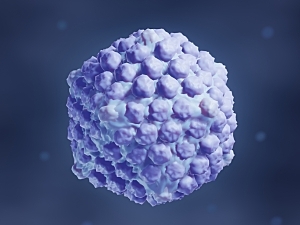In 2020, Brigham and Women’s Hospital researchers reported that both mucosal and systemic immunity imbalances contribute to HIV risk in African women (published in JAIDS), and aberrant cervical immunity precedes other sexually transmitted infections (published in PLoS One), including herpes simplex virus-2 (HSV-2). These data came from Hormonal Contraception and Risk of HIV (HC-HIV), a large prospective study in Uganda and Zimbabwe.
Building on the findings, the Brigham team now reports that the immunity imbalance predisposing to HSV-2 isn’t limited to the cervix but rather extends to the systemic circulation, and HSV-2 may alter both mucosal and peripheral innate immunity to contribute to HIV-1 risk. Raina N. Fichorova, MD, PhD, director of the Laboratory of Genital Tract Pathology, Yashini Govender, PhD, a former research fellow there, and colleagues explain the data and its implications in Sexually Transmitted Infections.
Methods
The researchers analyzed data on 3,116 HIV-negative visits of 1,019 women in the HC-HIV study. At 49% of visits, the woman was HSV-2 negative, at 20%, the woman had incident HSV-2 (infection within six months after first becoming HSV-2 seropositive), and at 31%, the woman had established HSV-2.
Biospecimens from the HC-HIV were available, and the researchers measured biomarkers of inflammation and immune activation that have been linked to the risk of HIV-1 infection:
- Ten cervical biomarkers: Interleukin (IL)−1β, IL-6, IL-8, IL-1 receptor antagonist (IL-1RA), RANTES, MIP-3α, vascular endothelial growth factor (VEGF), soluble leukocyte protease inhibitor (SLPI), beta defensin (BD)-2, and intercellular adhesion molecule-1 (ICAM-1)
- Four serum biomarkers: IL-6, IL-7, C-reactive protein (CRP), and soluble CD14 (sCD14)
Biomarkers Preceding and Predicting HSV-2 Acquisition
Systemic immunity contributed to the risk of HSV-2 acquisition, both independently and in conjunction with altered cervical immunity:
- Individually altered biomarkers—Significantly higher odds of subsequent HSV-2 acquisition were found with high cervical BD-2, low cervical SLPI, low cervical ICAM-1, high systemic sCD14, or high systemic IL-6. Significantly lower odds were found with high cervical IL-6 or high cervical MIP-3α
- Concomitantly altered biomarkers—In cervical secretions, decreased HSV-2 acquisition risk was associated with the combination of high IL-1β and IL-6 and the combination of IL-8 and MIP-3α. Concomitantly low ICAM-1 and VEGF were tied to increased risk. Within the systemic circulation, increased HSV-2 acquisition risk was associated with high sCD14 and IL-6 and with high sCD14, IL-6, and IL-7
- Combined cervical and systemic biomarkers—Some combinations of aberrant cervical and systemic biomarkers were predictive. For example, high systemic IL-6 in combination with high cervical IL-1β and IL-6 was associated with decreased risk of HSV-2 acquisition
Differences in Cervical and Systemic Immunity
HSV-2 infection changed cervical and systemic innate immunity, and incident and established infections differentially influenced those changes:
- Levels of seven of the 10 cervical biomarkers were lower in HSV-2 incident visits than HSV-2 negative visits
- Levels of five of the 10 cervical biomarkers were lower in HSV-2 established visits than HSV-2 negative visits
- Women with incident HSV-2 infections had significantly lower levels of cervical IL-1β and MIP-3α, but also lower systemic IL-6, than women with established infections
Implications for Drug Development
This study provides clinical evidence of divergent and shared mechanisms of vulnerability to HSV-2 and HIV-1. The molecular predictors of HSV-2 risk are expected to lead to targets and clinical safety endpoints for the development of preventive drugs.
